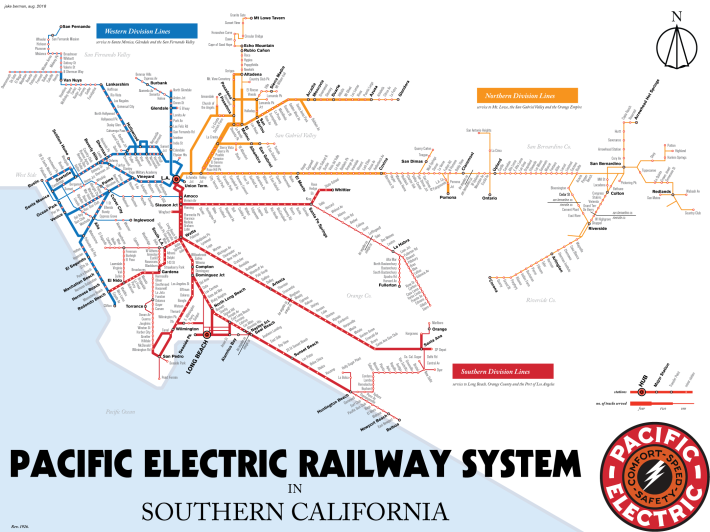[dropcap size=big]J[/dropcap]ake Berman was stuck in traffic one day on the 101 when he had the same thought many Los Angelenos do: "There's got to be a better way." The former Koreatown resident recently told L.A. Taco about the moment that inspired him to map out the Red Cars, L.A.'s old public transit system, once the largest in the entire world.

"I'd like Angelenos to be able to imagine a Los Angeles that wasn't totally dependent on the car," Berman told L.A. Taco. "Contrary to popular belief, it was the streetcars that originally defined L.A. and you can still see traces of that legacy across the metropolis if you know where to look."
RELATED: Map of Los Angeles as it Appeared in 1871
Berman, who is currently working as a lawyer in New York, said the project has been on his mind for quite some time. But he finally got it done and shared it on Reddit last week, where it quickly made it up the points ladder.
"I came up with the idea a few years ago," Berman recalled "I started doing research in the L.A. Public Library's map collection. Life got in the way, so my map project sat on the back burner for a few years until I finally finished it this year."
Berman said cartography and graphic design is a side project. He's got a ton more map work on his site fifty-three studio, including historical maps of Caracas, Venezuela and Oakland. He's also mapped out Wakanda's light rail system from Black Panther.

But even Wakanda's sci-fi magical realism pales in comparison to 1926 Los Angeles.
"L.A. had the largest electric railway system in the world," Berman noted. "There were over 1,000 miles of streetcar track in the Southland. For comparison, Metro currently has 105 miles of track, and the NYC Subway currently has 691."
The Pacific Electric Railway Company, which built the rial, was created in 1901 by Henry E. Huntington, namesake of Huntington Park, Huntington Beach, and the Huntington Library. By the 1920s, Huntington had developed a model for owning half the L.A. Basin.
Berman said Pacific Electric was "not coincidentally" one of the city's biggest real estate developers. "The Pacific Electric's business model was simple: buy up cheap land far from DTLA, build houses, and connect it to DTLA with a train line," he explained. "The loss of the Pacific Electric is a big reason why L.A. has such terrible traffic."
RELATED: Transport Fantasy Map ~ Los Angeles







